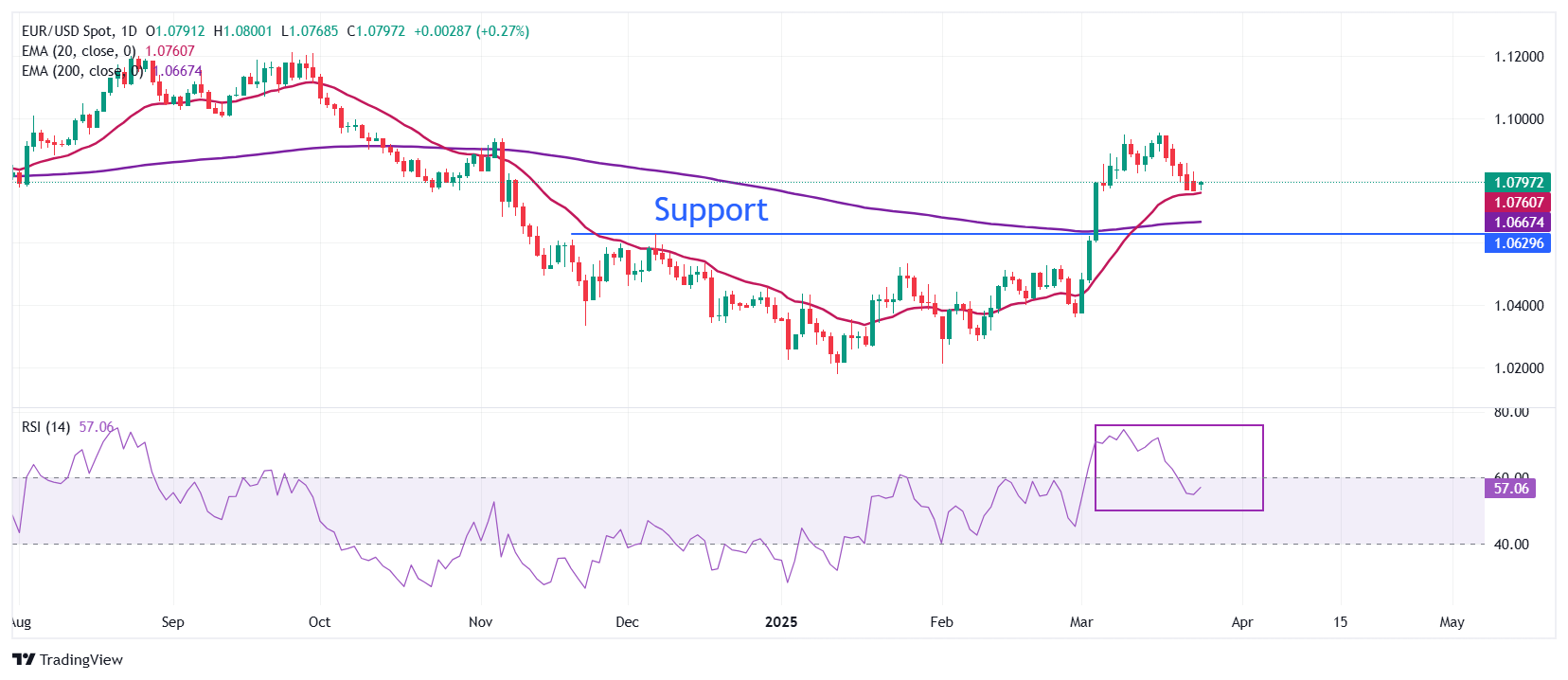- EUR/USD remains under pressure near 1.0800 as the USD Index holds near a three-week high of 104.40.
- Market focus shifts to Friday’s US PCE inflation data for insights on future interest rate decisions.
- ECB’s Villeroy advocates for additional cuts in key borrowing rates.
EUR/USD is striving to rebound from a five-day losing streak, hovering near 1.0800 during European trading hours on Wednesday. However, the pair’s outlook remains uncertain as the US Dollar (USD) retains strength, with the US Dollar Index (DXY) holding near a three-week high at 104.40. This resilience is fueled by expectations that former US President Donald Trump’s trade policies may have a milder impact on the economy than initially feared.
On Monday, Trump indicated that upcoming tariffs might not be enforced uniformly, as he considers offering exemptions to several countries. While a broad-based trade war could trigger global economic disruptions, selective tariff reductions could limit the negative economic consequences.
Despite these developments, US consumer confidence has weakened as potential tariffs are expected to reduce household purchasing power. The Conference Board’s Consumer Confidence Index for March fell sharply to 92.9 from 100.1 in February, signaling growing concerns over economic conditions.
Looking ahead, the primary catalyst for USD movement will be the US Personal Consumption Expenditures (PCE) Price Index data for February, scheduled for release on Friday. Market expectations suggest that core PCE inflation—the Federal Reserve’s (Fed) preferred inflation gauge—could rise to 2.7% year-over-year, up from January’s 2.6%.
Last week, the Fed adjusted its core PCE forecast for 2024, raising it to 2.8% from the 2.5% estimate in December. This revision reflects persistent inflationary pressures, which could influence the Fed’s rate outlook.
Market Movers: EUR/USD Faces Pressure on ECB Dovish Expectations
- EUR/USD remains cautious as expectations for further European Central Bank (ECB) rate cuts weigh on the Euro. The Eurozone economy faces downside risks, particularly as Trump has repeatedly hinted at imposing tariffs on the region for insufficient imports of US goods.
- Historically, central banks lower interest rates to support domestic economies in response to adverse external conditions. Germany has already taken measures to bolster economic growth, increasing borrowing limits to finance defense spending and a €500 billion infrastructure fund.
- ECB President Christine Lagarde has attempted to ease concerns about persistent inflation, stating last week that trade war-related inflationary effects would be temporary, as weaker economic activity would curb price pressures in the medium term. Additionally, ECB Governing Council member François Villeroy de Galhau suggested on Tuesday that further rate cuts are possible, with the Deposit Facility Rate potentially dropping from 2.5% to 2% by the end of summer.
Technical Analysis: EUR/USD Dips Below 1.0800

EUR/USD has extended its pullback from a five-month high of 1.0955, approaching the 20-day Exponential Moving Average (EMA) at 1.0760. Despite this decline, the pair maintains a long-term bullish outlook, as it remains above the 200-day EMA, currently positioned around 1.0667.
The 14-day Relative Strength Index (RSI) has cooled below 60.00, indicating a slowdown in bullish momentum, though the overall upward bias remains intact.
On the downside, the December 6 high of 1.0630 serves as a key support level. Conversely, the 1.1000 psychological mark remains a major resistance level for Euro bulls.





